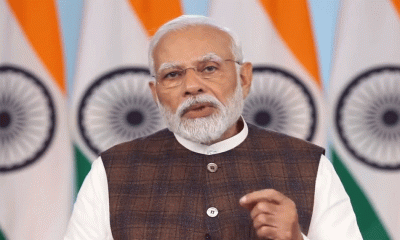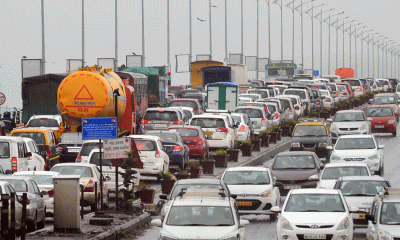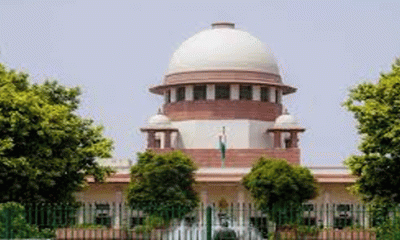International News
‘I Don’t Hate PM Modi, But Disagree With His Point Of View,’ Says Congress Leader Rahul Gandhi In US
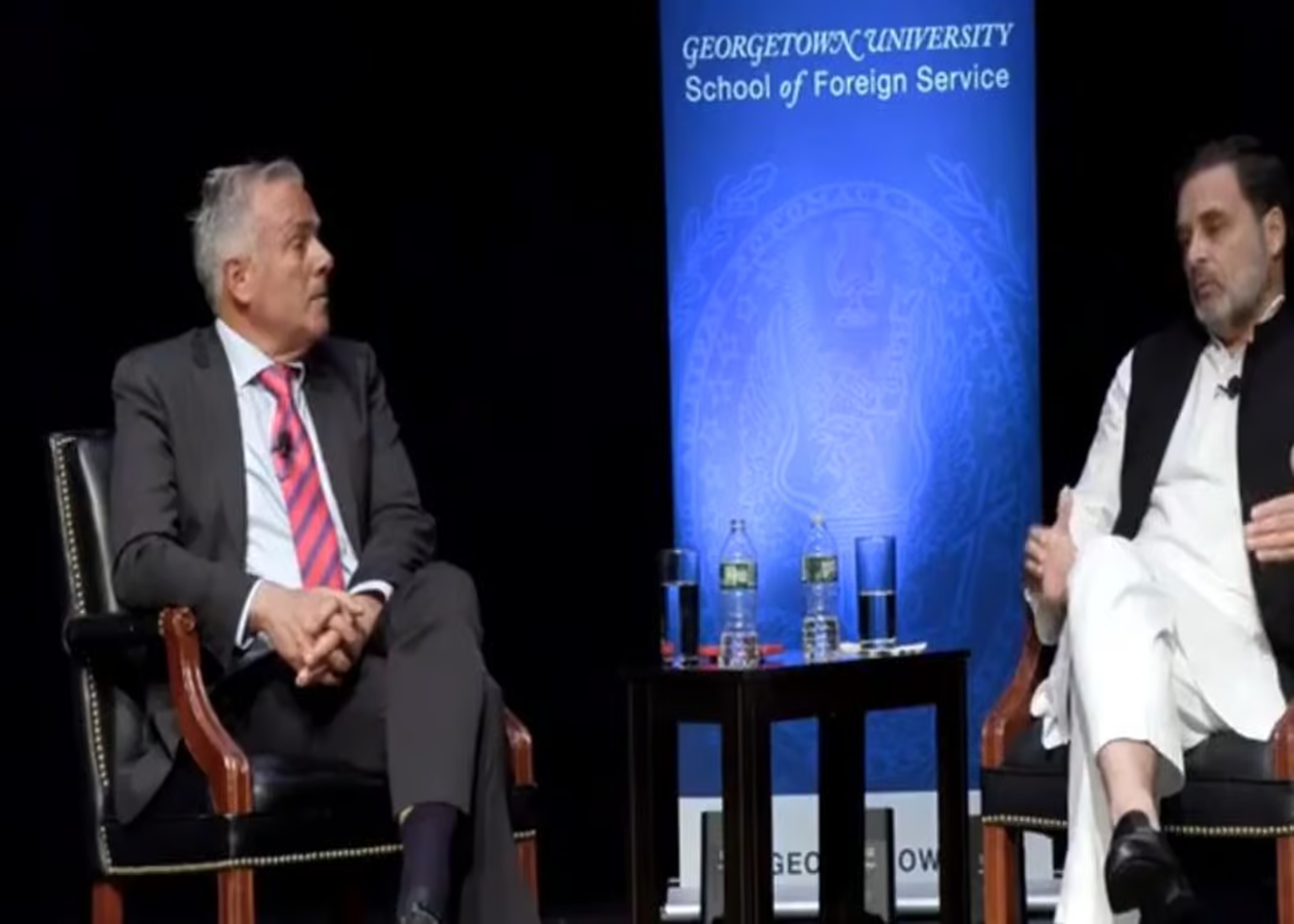
Washington DC: After launching a tirade of attacks at Prime Minister Narendra Modi, Congress leader and Leader of Opposition in Lok Sabha, Rahul Gandhi, opened up on his thoughts on his rivals and said he doesn’t hate the Prime Minister but only disagrees with his point of view.
The Congress leader was interacting with students and faculty at Georgetown University in Washington, DC, on Monday (local time).
He also said that India essentially, is an idea of mixing and merging, while alleging that BJP and RSS have the “misunderstanding” of seeing India as a bunch of separate things.
“India at heart, is a union of languages, traditions, histories, religion, everything…When you have lunch here, you get first course, second course…we don’t get that, we get a thali, and everything placed in it…it’s a jumble and every food has the same value…so this idea of mixing and merging is in India,” Rahul Gandhi said.
“When Indian people go to their religious places, they merge with their deity. This is the nature of India. The misunderstanding that BJP and RSS have is they think that India is a whole bunch of separate things. So we don’t need to redefine anything, it’s already there,” he added.
Congress Leader Rahul Gandhi On ‘Mohabbat Ki Dukaan’ Slogan
Being asked about the idea of ‘love’ in reference to his ‘Mohabbat Ki Dukaan’ slogan, the Congress leader said he disagrees with Prime Minister Modi’s point of view but doesn’t hate him or consider him as his enemy.
“That’s more fun, you go in politics, you shout at that guy and that guy shouts back at you, then you abuse him, then he abuses you back. It’s boring stuff,” Rahul Gandhi said.
“You will be surprised, but I don’t actually hate Mr Modi…he has got a point of view, fine, I don’t agree with his point of view but I don’t hate him. In many moments, I empathise with him. I don’t think like he is my enemy. He has a different point of view, I have a different point of view. I have empathy and compassion for what he is doing,” he further added.
Congress Leader Rahul Gandhi On The 2 Major Challenges Faced By The Congress Party & The Opposition
He further remarked that the Congress party and the Opposition faces two major challenges; first to contest elections and second of “undoing the damage” done by BJP-RSS.
“First, contesting the election, we are confident that we will fight and win the elections against BJP. In the next two or three months we will win these elections. Then, undoing the damage that BJP and RSS have done to our institutions is a much deeper problem and that is not going to get solved so easily and so simply. I still have 20+ cases against me…There is a huge set of structures that are being used to attack the opposition – investigative agencies, the legal system that continues, that has to stop. The real challenge is to make institutions neutral again,” Rahul Gandhi further stated.
About Congress Leader Rahul Gandhi’s Visit To The US
Rahul Gandhi who is on a visit to the US, will be in Washington for two days. Earlier in the day, he addressed the Indian diaspora in Virginia.
Gandhi, who arrived in Dallas on Sunday, also interacted with students and teachers at the University of Texas. He also addressed the members of the Indian diaspora in Dallas.
The Congress leader called the Indian diaspora in the US a ‘vital bridge’ between two nations.
International News
PM Modi’s 75th Birthday: Leaders, Including Jaishankar, Amit Shah, Donald Trump, Extend Birthday Wishes
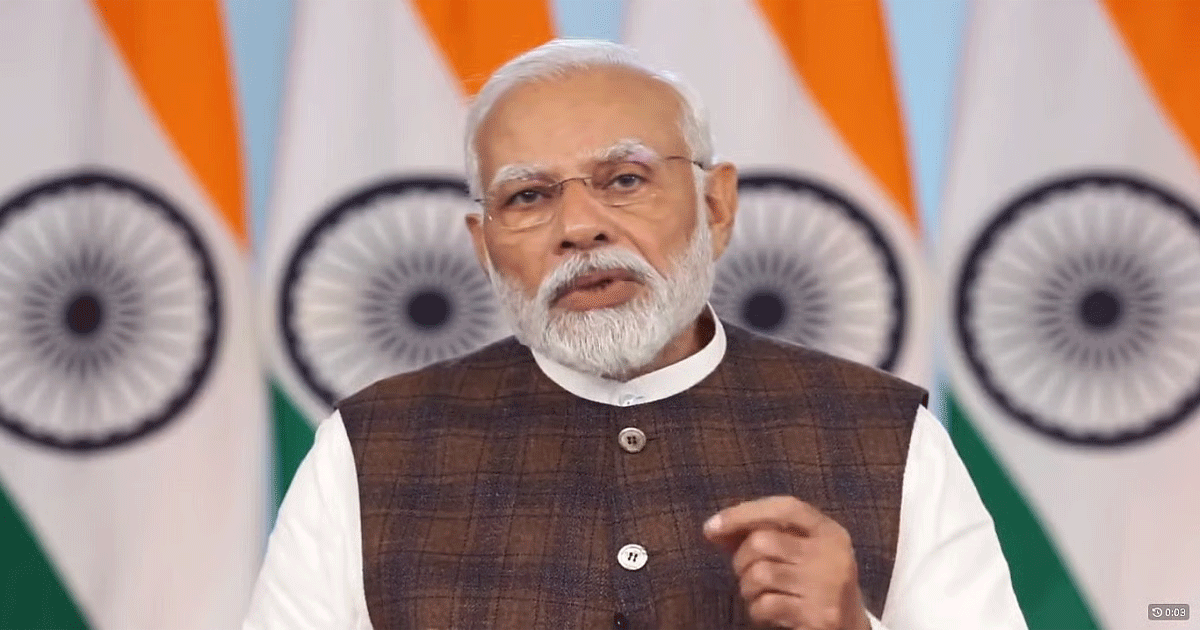
New Delhi: External Affairs Minister S. Jaishankar on Wednesday extended birthday greetings to Prime Minister Narendra Modi, praising his leadership and commitment to building a self-reliant India.
“Join the nation in conveying best wishes to Prime Minister @narendramodi ji on his birthday. His transformative leadership and firm resolve to build an Atmanirbhar, Sammridh and #ViksitBharat serve as an inspiration. Wish him good health and many more years in the service of the nation,” Mr. Jaishankar posted on X.
Among those who wished the Prime Minister included US President Donald Trump who through a phone call expressed gratitude for India’s support on ending the conflict between Russia and Ukraine.
In a post on his social media account, Truth Social, Trump stated that PM Modi is doing a “tremendous job.” PM Modi also shared details of the call and thanked Trump for his wishes, calling him a “friend”. The Prime Minister also noted that he is “committed to taking the India-US Comprehensive and Global Partnership to new heights.”
“Thank you, my friend, President Trump, for your phone call and warm greetings on my 75th birthday. Like you, I am also fully committed to taking the India-US Comprehensive and Global Partnership to new heights. We support your initiatives towards a peaceful resolution of the Ukraine conflict,” PM wrote in an X post.
The greetings from the US President came on a day when the US Trade Representative, Brendan Lynch, was in the national capital to discuss next steps in bilateral trade negotiations. Lynch had a positive meeting with his counterpart, Ministry of Commerce and Industry Special Secretary Rajesh Agrawal, on Tuesday, with both sides deciding to intensify efforts to achieve an early conclusion of a mutually beneficial Trade Agreement.
Meanwhile, Union Home Minister Amit Shah also extended greetings to PM Modi on his 75th birthday, calling him a symbol of sacrifice and dedication.
In a post on X, Shah said the Prime Minister remains an inspiration for crores of Indians.
“Symbol of sacrifice and dedication, inspiration for crores of countrymen, heartfelt birthday wishes to Prime Minister Shri @narendramodi ji on his 75th birthday. Modi ji, who has been working tirelessly, without stopping or tiring, for the welfare of the countrymen for more than five decades in social life, is a living inspiration of ‘Nation First’ for every citizen,” Shah wrote.
President Droupadi Murmu also extended her greetings to PM Modi on the occasion, saying he has “instilled a culture of achieving great goals” in the country through his extraordinary leadership.
“Heartfelt birthday greetings and best wishes to the Prime Minister of India, Shri @narendramodi ji. By exemplifying the pinnacle of hard work through your extraordinary leadership, you have instilled a culture of achieving great goals in the country,” the President posted on X.
Business
India, Japan can diversify trade basket, open new frontiers with renewed efforts: PM Modi

Tokyo, Aug 29: Hailing the robust India-Japan economic and trade partnership, Prime Minister Narendra Modi on Friday said with renewed efforts, both nations can diversify their trade basket, make it more balanced, and open up new frontiers as well.
In an interview with Japanese newspaper The Yomiuri Shimbun, the Prime Minister said we must aim bigger and remain ambitious.
“The synergies across governments, businesses and people can create scale and speed in our economic partnership. As the world’s leading economies, we have been contributing to each other’s growth, competitiveness and dynamism,” PM Modi told the publication.
Japan has been a trusted partner in India’s infrastructure development across generations. The country has also been a leading source of foreign direct investment (FDI) for India in key sectors, including automobiles, electronics, telecom, chemicals, finance, and pharmaceuticals.
According to PM Modi, the number of Japanese firms in India has grown steadily to around 1,500, while more than 400 Indian companies operate in Japan.
“Clearly, this is only the beginning — the real potential is much higher,” he noted.
“We maintain important trade relations, but it has not yet reached the levels envisaged under our CEPA (Comprehensive Economic Partnership Agreement)… The 20th century saw Japan emerge as a major partner in India’s infrastructure development. I am confident that the 21st century will see Japan as a major partner in India’s innovation, manufacturing, and global value chains,” the Prime Minister emphasised.
On semiconductors, PM Modi told the publication that India’s semiconductor sector is on the cusp of transformation.
“We have put in place a comprehensive regulatory and policy framework, backed by incentives, to build a strong semiconductor and display ecosystem. Already, six semiconductor units are taking root in India, with four more on the way. By the end of this very year, ‘Made in India’ chips will be in the market, a clear demonstration of India’s design and manufacturing capabilities,” the Prime Minister said.
Japanese companies, with their technological strengths and global leadership, can play a pivotal role in this journey, he said, adding that a strong beginning has already been made.
“By combining India’s scale and capabilities with Japan’s advanced technologies, we can build a resilient and trusted semiconductor value chain,” PM Modi stressed, adding that this collaboration will support the technological ambitions of both our countries and enhance global supply chain security.
“I see semiconductor cooperation emerging as a major pillar of the India–Japan partnership. After all, in this digital century, chips are not just about computers, they are about competitiveness, credibility and confidence in the future,” he mentioned.
Some Japanese companies are positioning their production bases in India as hubs for third-country markets such as Africa.
According to PM Modi, India has seen multi-faceted reforms which make manufacturing in India easier than ever before.
“We have removed compliance burdens, rolled out incentives and ensured a large skilled workforce for companies to set base in India. Many global companies, including those from Japan, are setting up their production in India not only to cater to our domestic market, but also for the world,” he highlighted in his response.
Japanese automaker Suzuki Motor Corporation this week announced it will invest Rs 70,000 crore in India over the next five to six years. The investment will be used to increase production, introduce new car models, and protect its leadership position in the world’s third-largest automobile market.
“Just a couple of days back, I was at the Suzuki plant in India where we flagged off electric vehicles to be exported to a hundred countries, including Japan,” said PM Modi.
International News
PM Modi’s China Visit: Bilateral Talks With Xi Jinping & Vladimir Putin Confirmed At SCO Summit Amid Trump’s Tarrif Row

New Delhi: Prime Minister Narendra Modi will hold bilateral meetings with Chinese President Xi Jinping on August 31 and Russian President Vladimir Putin on September 1 in Tianjin, during the Shanghai Cooperation Organisation (SCO) summit.
The talks come at a sensitive moment, as India grapples with strained economic ties with the United States following tariff hikes by President Donald Trump.
India’s relationship with China, though still fragile, has shown signs of cautious improvement after years of confrontation. Tensions had escalated after the deadly Galwan Valley clashes in June 2020, but sustained diplomatic and military engagements have since led to withdrawals from some key friction points along the Line of Actual Control.
Despite heavy deployments, both sides have worked to lower the risk of fresh escalation. This will mark Modi’s first visit to China in more than seven years, his last being the informal Wuhan summit with Xi in 2018. The upcoming meeting is expected to test whether the managed thaw between the two Asian neighbours can move into a more stable phase.
The meeting with Putin is equally significant. With Moscow under Western sanctions over the Ukraine war, Russia is seeking to reinforce its traditional partnership with India while expanding its alignment with China. Officials have hinted at possible trilateral discussions involving India, Russia and China, which may surface in the Modi-Putin talks.
The wider SCO summit will draw leaders from across Central Asia, South Asia, the Middle East and Southeast Asia. For China, it represents a stage to assert leadership of the Global South and to extend diplomatic support to Russia. For India, the gathering provides an opportunity to reaffirm its place in multilateral forums and present itself as a balancing force in shifting global alignments.
-

 Crime3 years ago
Crime3 years agoClass 10 student jumps to death in Jaipur
-

 Maharashtra12 months ago
Maharashtra12 months agoMumbai Local Train Update: Central Railway’s New Timetable Comes Into Effect; Check Full List Of Revised Timings & Stations
-

 Maharashtra11 months ago
Maharashtra11 months agoMumbai To Go Toll-Free Tonight! Maharashtra Govt Announces Complete Toll Waiver For Light Motor Vehicles At All 5 Entry Points Of City
-

 Maharashtra12 months ago
Maharashtra12 months agoFalse photo of Imtiaz Jaleel’s rally, exposing the fooling conspiracy
-

 National News11 months ago
National News11 months agoMinistry of Railways rolls out Special Drive 4.0 with focus on digitisation, cleanliness, inclusiveness and grievance redressal
-

 Crime11 months ago
Crime11 months agoBaba Siddique Murder: Mumbai Police Unable To Get Lawrence Bishnoi Custody Due To Home Ministry Order, Says Report
-

 Maharashtra10 months ago
Maharashtra10 months agoMaharashtra Elections 2024: Mumbai Metro & BEST Services Extended Till Midnight On Voting Day
-

 National News12 months ago
National News12 months agoJ&K: 4 Jawans Killed, 28 Injured After Bus Carrying BSF Personnel For Poll Duty Falls Into Gorge In Budgam; Terrifying Visuals Surface



